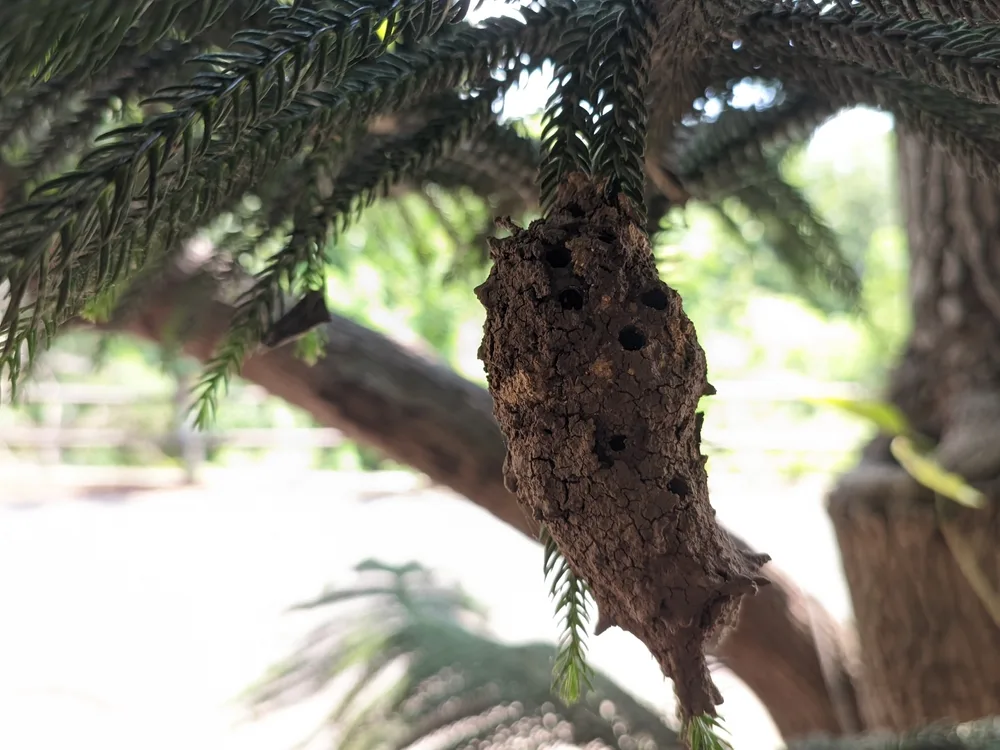When you think of wasp nests, mud or paper nests hidden under awnings and decks may come to mind.
But there are also wasps lurking somewhere you might not expect: in the ground.
If you spot distinctive yellow and black insects, your next instinct is probably to find out how to get rid of ground wasps.
While ground wasps typically aren’t aggressive, they can sting if their nest is disturbed, and that’s a risk if you don’t realize a nest is underfoot.
Although they offer benefits to your yard and garden through pollination and pest control, it that doesn’t mean you want them nesting close to your house.
Luckily, there are several ways to get rid of ground wasp nests and send them to find a new home underground.
What Are Ground Wasps?

Ground wasps are typically either yellow jacket hornets or solitary wasps, with the hornets having a reputation as the more aggressive species.
Each species looks different, but there are a few similar characteristics.
- Black and yellow striped, ranging from mostly black with yellow stripes on the abdomen to including orange or rust-colored stripes
- Some have slender frames with bulbous abdomens, while others have thick bodies and thoraxes
Orange or black wings - .5″ to 1.5″ long
Tip
While you may not want ground wasps invading your garden, they are actually helpful in limiting pests. They often eat larvae, roaches, and other bugs that you don’t want feasting on your plants. When they’re not eliminating pests, they’re pollinating your garden.
What Does a Ground Wasp Nest Look Like?
Because there are several types of species, the best way to identify whether or not you have ground wasps and to treat them is to spot a nest.
Often, you’ll first notice holes in your garden. Some species burrow their own holes, while others take over holes created by other insects or animals.
Holes created by ground wasps are around an inch and a half in diameter.
Often, the insects prefer sandy soil, which is easier for digging. To dig the holes, they’ll pile the dirt that was once in the ground around the burrowed hole.
You will often find several holes near each other with conical piles of dirt nearby. Because they feed on sugary foods, like fruit, you may find these nests near fruit trees or berry bushes.
Before you decide to eliminate the nest, decide whether it’s actually necessary. Is the nest in a place that disturbs your garden? Are you at risk of accidentally stepping on the nest? If so, the risks outweigh the benefits for your garden.
5 Ways to Get Rid of Ground Wasp Nests
If you’ve spotted these dirt piles scattered across your garden and elimination is the best plan, here are five ways to get rid of ground wasp nests.
WARNING
To avoid an unwanted run-in with a wasp, take action in the evening or at night. At this time, the wasps are less likely to be active and, therefore, less likely to sting.
1. Keep Your Yard Moist
This first method is preventative. Ground wasps prefer dry soil because it’s easier for them to dig.
Because of this, you’ll often find them burrowing in sand. If you keep your yard moist throughout late spring and early summer, when they’re most likely to nest, you may be able to prevent them from forming nests in your yard.
2. Sprinkle Diatomaceous Earth Around the Nest
Diatomaceous earth is a natural insecticide powder that you can sprinkle around a wasp’s nest to kill the wasps.
This method typically takes a few days to work, but it’s one of the most effective ways to remove a ground wasp nest.
3. Flood the Nest With Soap and Water
If you already have a nest present, cover the nest with landscaping fabric and tack down the edges.
Cut a small hole within this fabric, then pour in a mixture of water and liquid dishwashing soap.
They won’t be able to find the hole within the fabric to escape, and the dishwashing soap will prevent them from flying. The water will flood the nest, eliminating it.
4. Spray the Nest With White Vinegar
Wasps detest the smell of vinegar and will actively avoid it.
Spray around the nest regularly with white vinegar until they have all evacuated, but be careful to only spray at night when the wasps are less active. Spraying vinegar during the day could anger them, leading to aggressive behavior.
Tip
You can also make DIY wasp traps that work outside of the ground. They won’t eliminate the nest and the problem entirely but will trap wasps when they’re in flight.
5. Seal the Nest
When you think of wasp nests, mud or paper nests hidden under awnings and decks may come to mind. But there are also wasps lurking somewhere you might not expect: in the ground.
If you spot distinctive yellow and black insects, your next instinct is probably to find out how to get rid of ground wasps.
While ground wasps typically aren’t aggressive, they can sting if their nest is disturbed, and that’s a risk if you don’t realize a nest is underfoot.
Although they offer benefits to your yard and garden through pollination and pest control, it that doesn’t mean you want them nesting close to your house.
Luckily, there are several ways to get rid of ground wasp nests and send them to find a new home underground.
